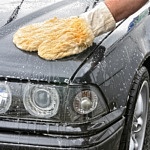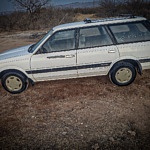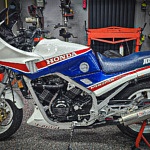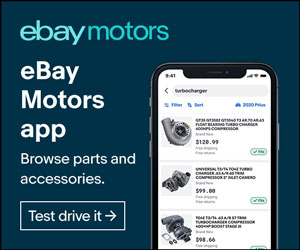What Is Fuel Octane?
Octane rating measures a fuel’s ability to resist pre-ignition—often called detonation, ping, or knock. There are multiple causes of fuel pre-ignition, including compression knock, oil contamination, timing issues, carbon deposits, and excessive heat.
Fuel octane rating has nothing to do with power output. If 93 octane is not recommended for your engine, you will not gain extra horsepower by filling up with it. If you have a high-compression engine, higher octane is required to keep the engine from detonating.
With a fuel-injected engine, octane boosters help you gain some power, but only if you previously used the wrong fuel. These days, a car’s electronic controls have effective fuel maps that make smart timing curve adjustments. Therefore, they maintain robust performance levels with lower octane levels.
Shop now for octane booster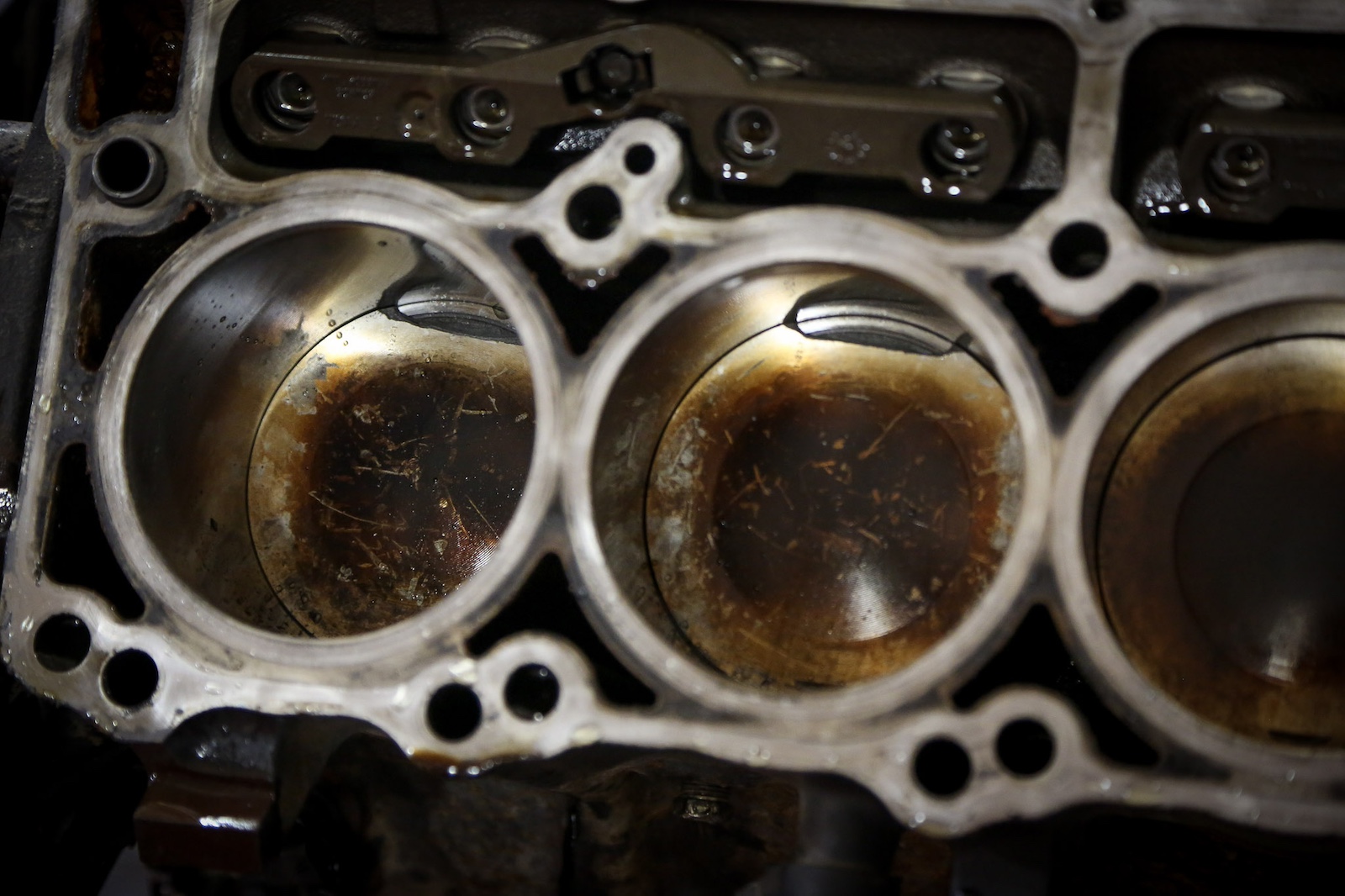
This engine had excessive knock caused by oil contamination, which popped the ring lands off the pistons. Oil vapor kills octane. This engine ran 93 octane, but the effective octane was closer to 85.
There are no automatic ECM adjustments for carbureted engines, so running fuel with the right octane rating is critical. Detonation can harm your engine. But higher octane is not always better. There is a maximum acceptable octane level for an engine based on its compression ratio. The higher the octane, the harder the fuel is to ignite. If the octane rating doesn’t sync with the engine’s compression ratio, the unburned fuel hurts your fuel economy and increases emissions.
Here are the recommended minimum octane levels determined by compression ratio:
- 87 octane for 9.0:1 or lower
- 89 octane (91 recommended) for 9.1:1 to 10.0:1
- 91 octane (93 recommended) for 10.1:1 to 11.0:1
- 93 octane or higher for 11.1:1 and up (Most OEM engines are not higher than 11.0:1)
These are generic guidelines and not definitive. A number of other factors go into calculating the minimum octane rating for an engine. Case in point: GM 2014 and newer Gen V LT-series engines have 11.4:1 static compression, but premium (91 to 94 octane) is recommended. Always follow the recommended fuel ratings in your vehicle’s owner’s manual.
Why Do You Need an Octane Booster?
Octane boosters are chemical additives that increase a fuel’s octane rating. There are several legitimate reasons to use them. If you use the right ones, they work. However, dumping an octane booster into your tank, if unnecessary, will not necessarily improve anything.
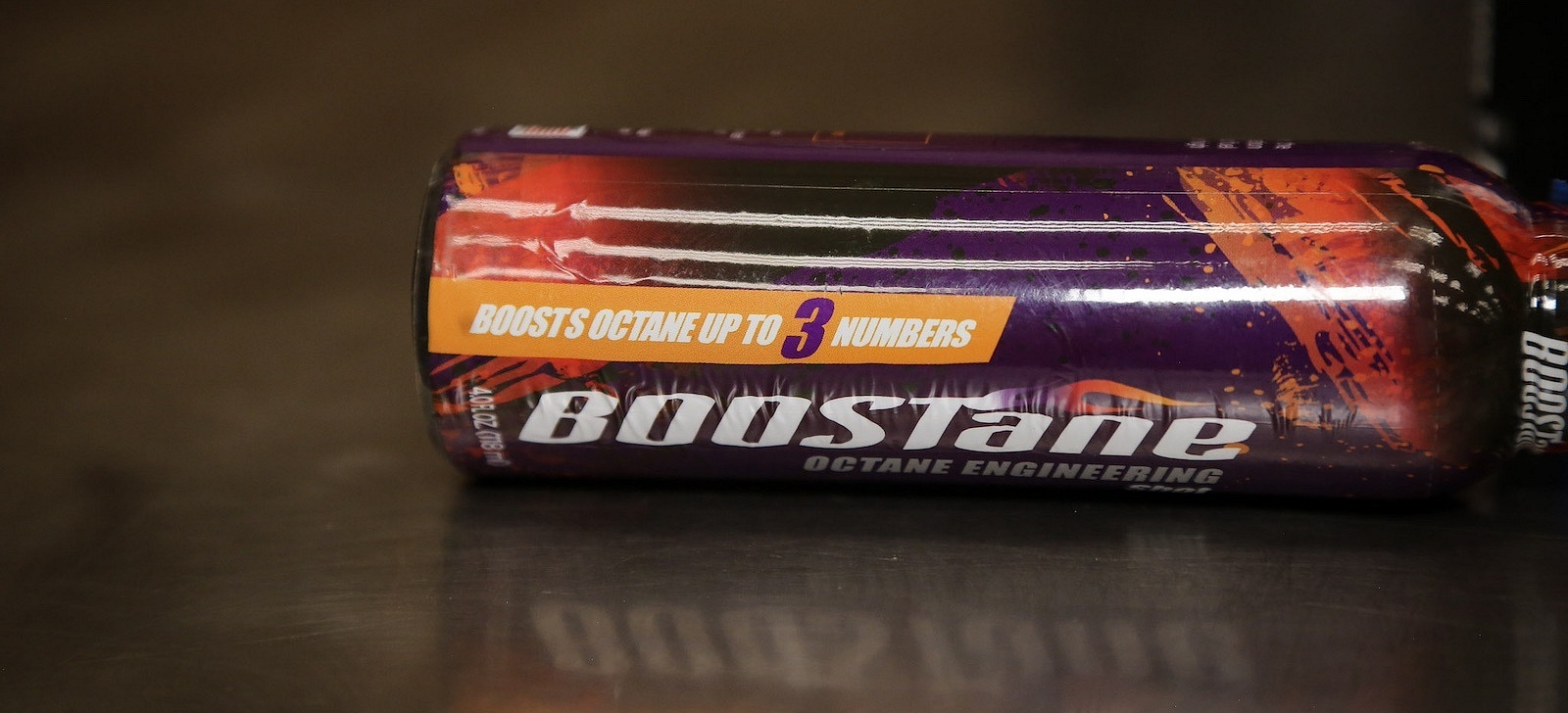
Boostane is one of the highest-rated octane boosters. This small bottle will increase octane by three numbers, from 87 to 87.3.
An octane booster addresses a deficiency in the fuel. Here are the most common uses:
- High-performance vehicles where fuel with the highest available octane rating is too low
- Older vehicles without hardened valve seats that need leaded fuel
Before the mid-1970s, most engines required leaded gas. That’s mainly due to non-hardened valve seats in the cylinder heads. Leaded fuel keeps the seats from deforming to stop sunk valves. An octane booster serves as a lead substitute for original engines, solving the issue.
However, for most booster use, performance is the goal. High-compression and supercharged or turbocharged engines need more octane to fight detonation. In boosted engines, the higher the boost, the higher the octane must be.
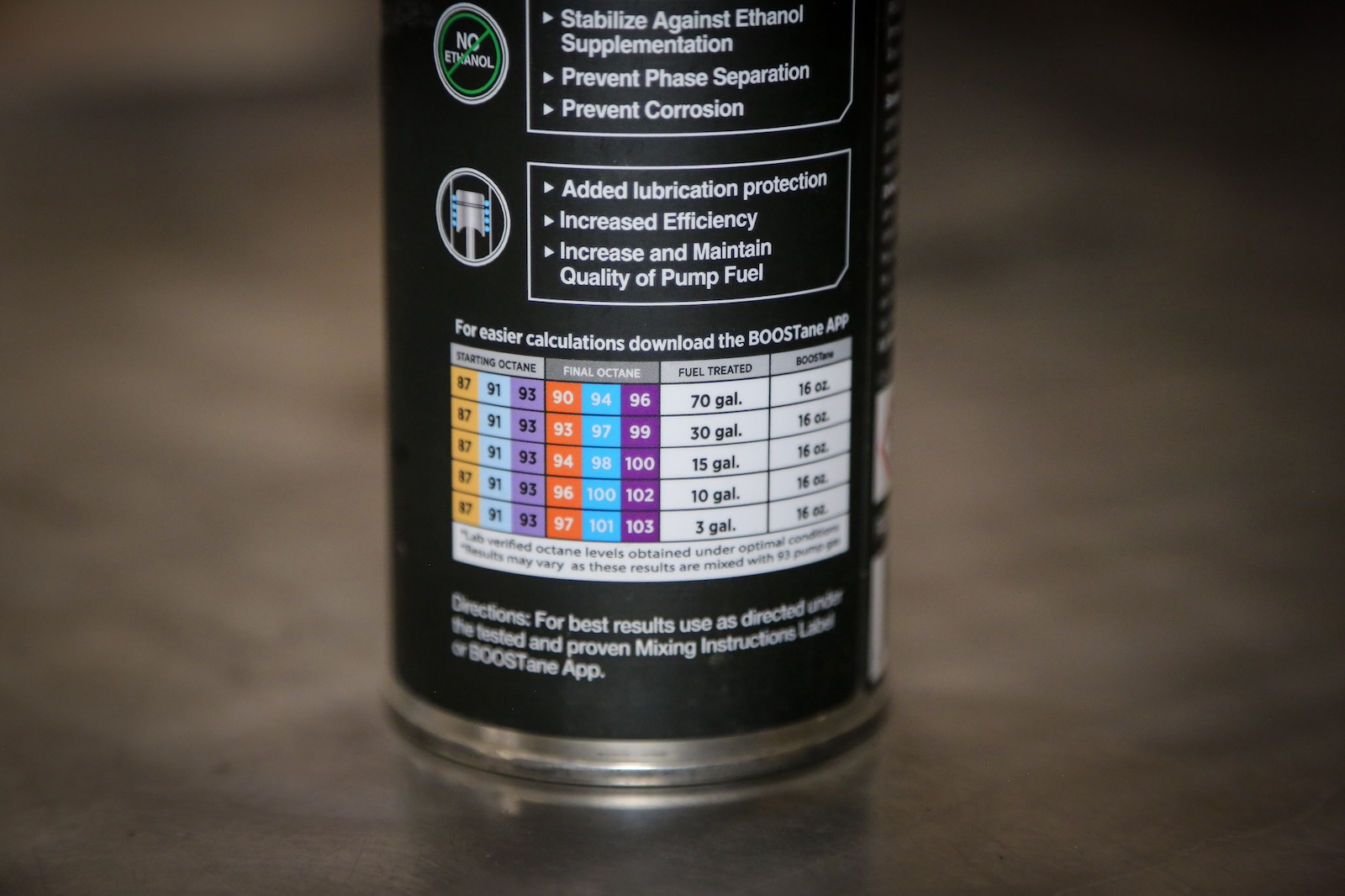
Paying attention to the mixing scale is critical. Some have the scale on the back of the bottle, others are more vague. Notice that this booster can raise 93 octane as high as 103. This is a street-legal MMT-based booster.
Other causes of knock/ping include oil contamination and carbon deposits. Oil contamination lowers the octane in the combustion chamber. Faulty PCV valves and excessive piston ring blow-by are two common causes. Octane boosters can help until you fix the underlying cause.
Carbon deposits cause pre-ignition when they get very hot (glowing red), which can ignite the air/fuel charge earlier than it should, causing a knock or ping. The detergents in plastic bottle octane boosters often fix this.
Shop now for octane boosterHow Do Octane Boosters Work?
Most octane boosters blend detergents, binding chemicals, and methyl alcohol. Methyl alcohol, otherwise know as methanol, along with lead (or lead substitute), MTBE, and ethanol— are the main ingredients in many octane boosters. It is effective at raising octane levels. However, there are downsides. Depending on the formula, you can increase deposits inside the engine.
The most effective and safe octane boosters are made with high-octane chemicals such as toluene, xylene, and MMT (methylcyclopentadienyl manganese tricarbonyl) instead of ethanol. These boosters are effective at safely raising the octane level without ethanol’s potentially harmful side effects. In the US, most gasoline straight from the pump uses these chemicals to boost octane levels. You would be just adding more.
Are Octane Boosters Safe and Legal?
It is generally safe to use an octane booster if you have a real need and use it correctly. You should never use more than the recommended amount of booster, which is usually noted on the bottle.
For example, if the packaging says, “one bottle treats up to 20 gallons,” that means 15 to 20 gallons, not five. Higher concentrations of the booster can damage your engine. Combustion byproducts are more corrosive than standard fuels. This is why boosters have additional detergents to mitigate these effects. Octane boosters are generally safe when used at the suggested mix ratios. Do not add more than needed.
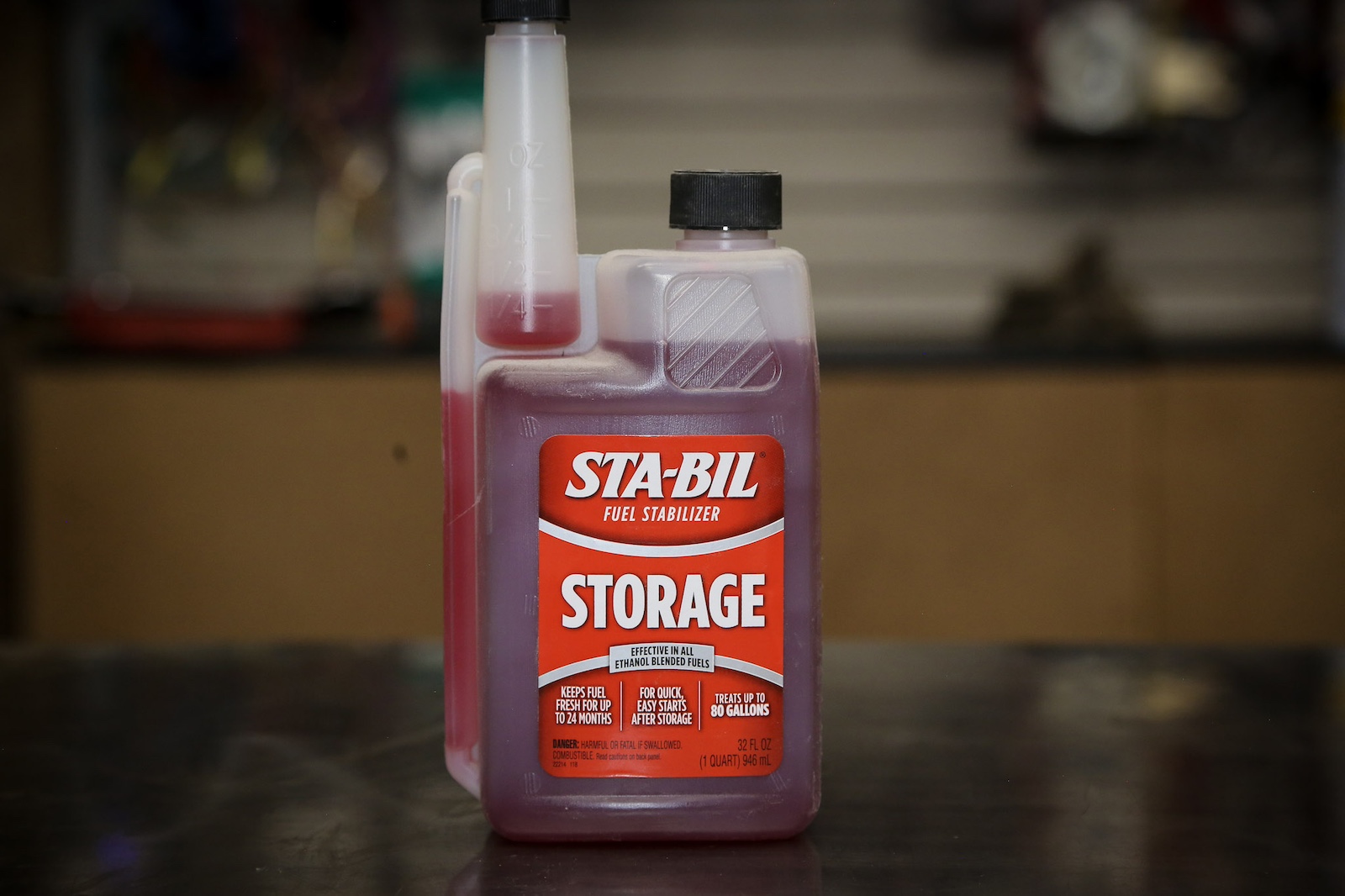
You can’t fix old gas with octane boosters, but you can keep your fuel from degrading by adding the correct amount of STA-BIL fuel stabilizer.
Most octane boosters are legal in all 50 US states. Boosters with a higher concentration of lead or MMT can push treated fuel over the legal limit. Those octane boosters are typically noted for use “off-road only.” For example, Boostane’s professional and marine boosters are not street legal. Check local laws.
Shop now for STA-BILWill an Octane Booster Help Old Gas?
Nope. If your fuel sat for longer than 30 days, there has been phase separation, when the ethanol separates from the base gasoline. This leaves you with a layer of water-laden ethanol on the bottom of the tank, and the rest of the gasoline sits on top, but with a significantly lower octane rating (under 84). An octane booster is not the answer. The best solution is to drain the tank and refill it. If you have no other choice, add a bottle of fuel stabilizer and top it off with as much fresh gas as possible. There are no viable products that can repair separated fuel.
Who Makes the Best Octane Booster?
STA-BIL, 104, and STP are among the most prominent brand names. But brand recognition doesn’t mean they are the best. STA-BIL is widely seen as the best fuel stabilizer treatment, but it doesn’t make an octane booster. If you store your vehicle (or outdoor equipment) for more than 30 days, add a bit of STA-BIL to the fuel and spare gas cans.
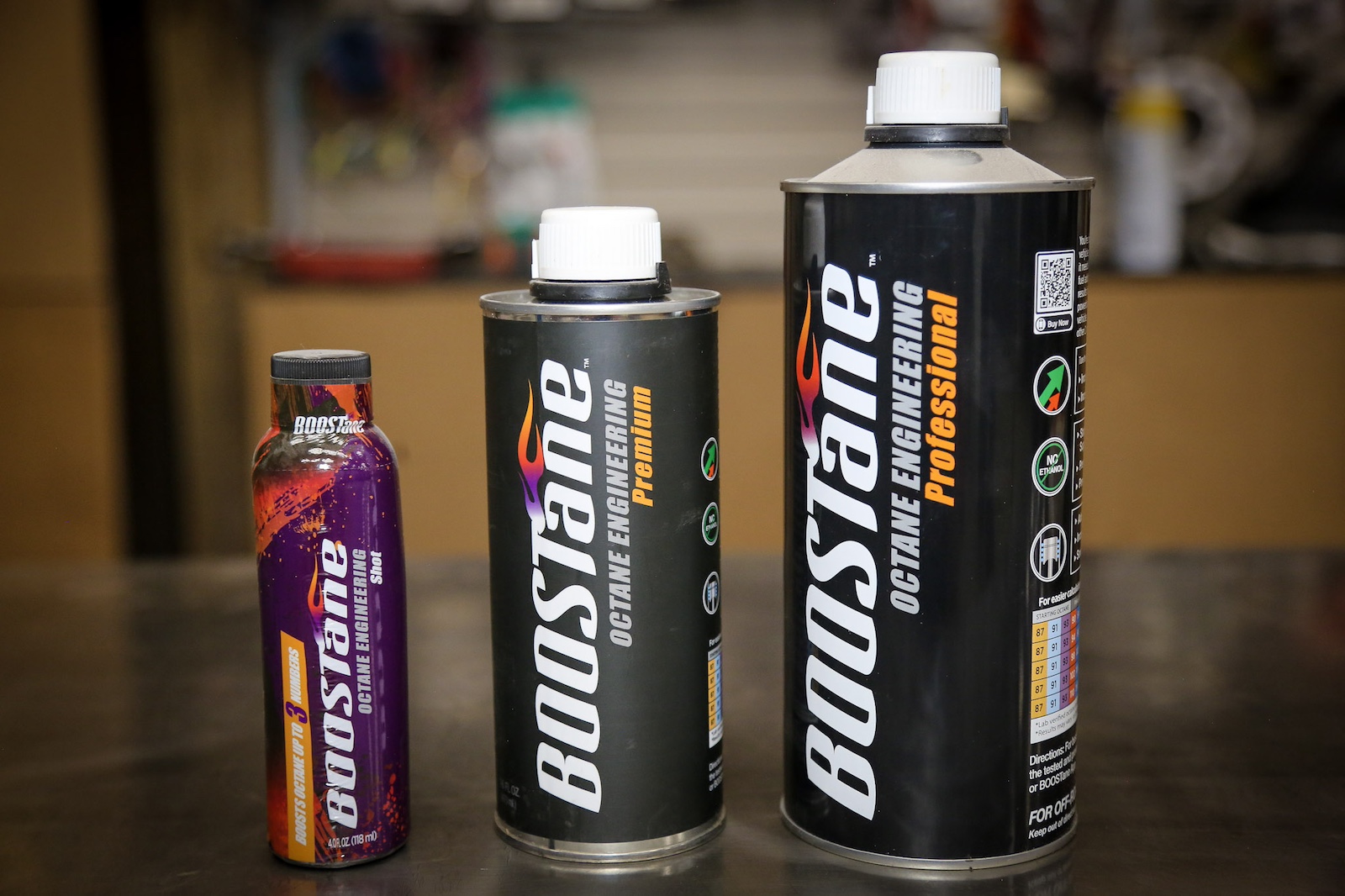
The best octane boosters come in metal cans due to the high concentrations of volatile chemicals, which will eat through a plastic bottle at these levels.
Metal Cans, Not Plastic Bottles
If it comes in a plastic bottle, it is not a good octane booster. The good stuff comes in a metal can because the chemicals that work react poorly with the plastics used for bottles. Those bottles contain chemicals and detergents to help reduce knock and absorb water. They have very little actual octane-enhancing ability. Don’t believe a bottle that makes dramatic promises.
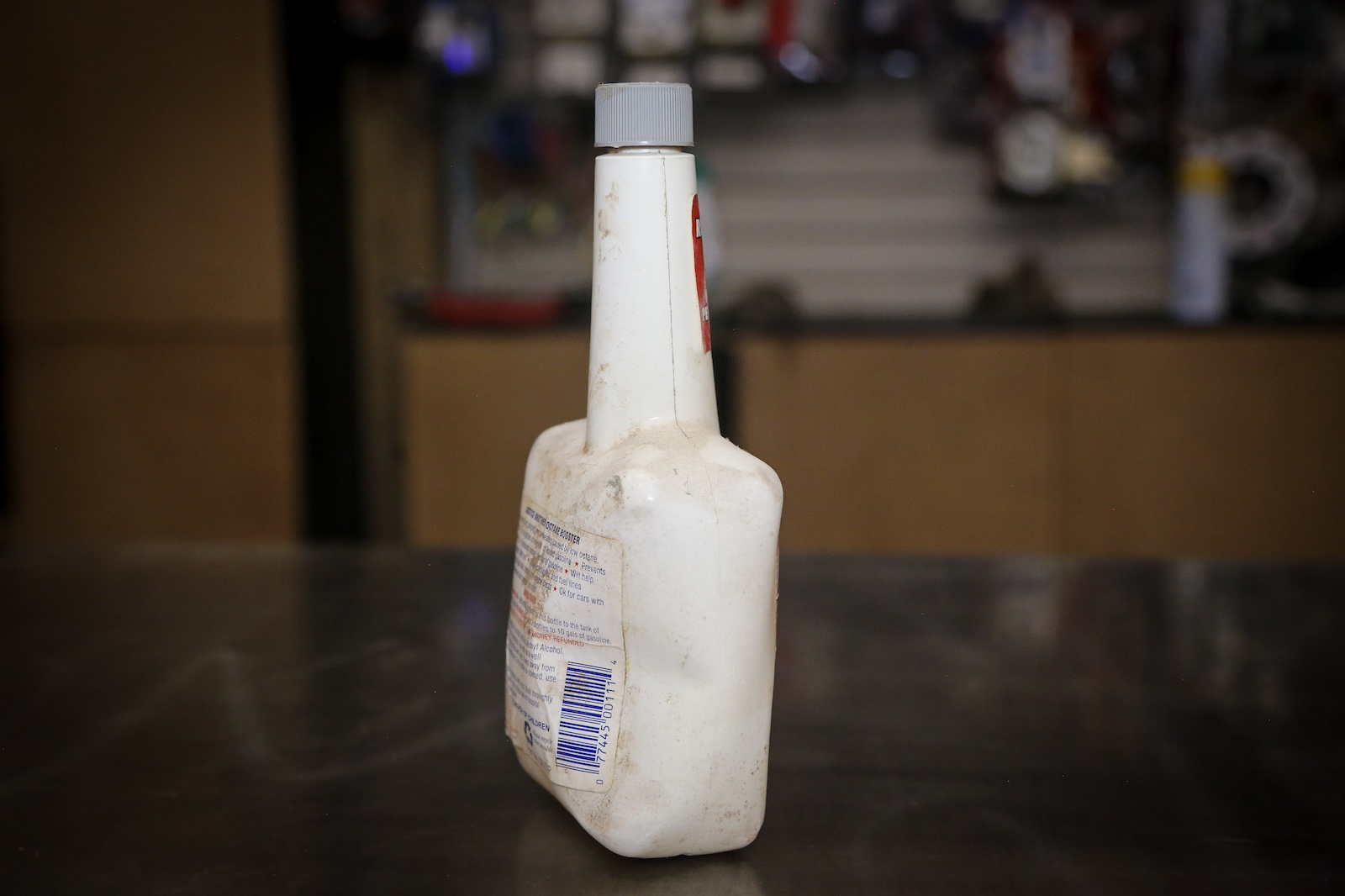
If you keep octane boosters on hand, store them correctly. This bottle was in a trunk during a hot summer and nearly exploded.
Boosters Without Methanol
Boosters without methanol have the same octane-boosting chemicals as refineries (MMT, toluene, xylene), which means better performance without the water retention that comes with ethanol. Amsoil, Boostane, Royal Purple, Torco, and VP Racing make MMT-based octane boosters.
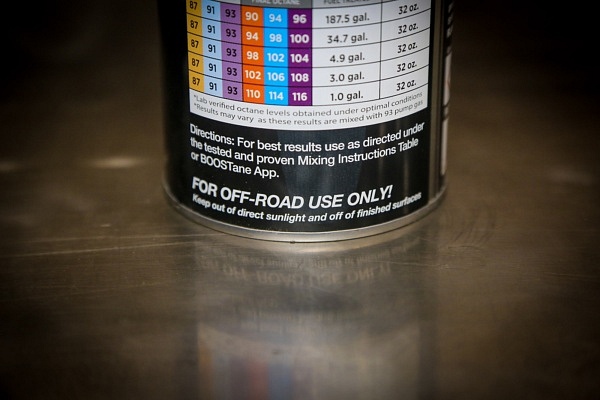
Some octane boosters have such high levels of MMT that the fuel exceeds the legal limit for road use.
There is a caveat to MMT boosters. When used in higher concentrations, they leave orange deposits on the spark plugs and catalytic converters. There are no issues if you have an older vehicle that needs a booster as a lead substitute. However, MMT boosters are not recommended for modern engines.
Shop now for octane booster

